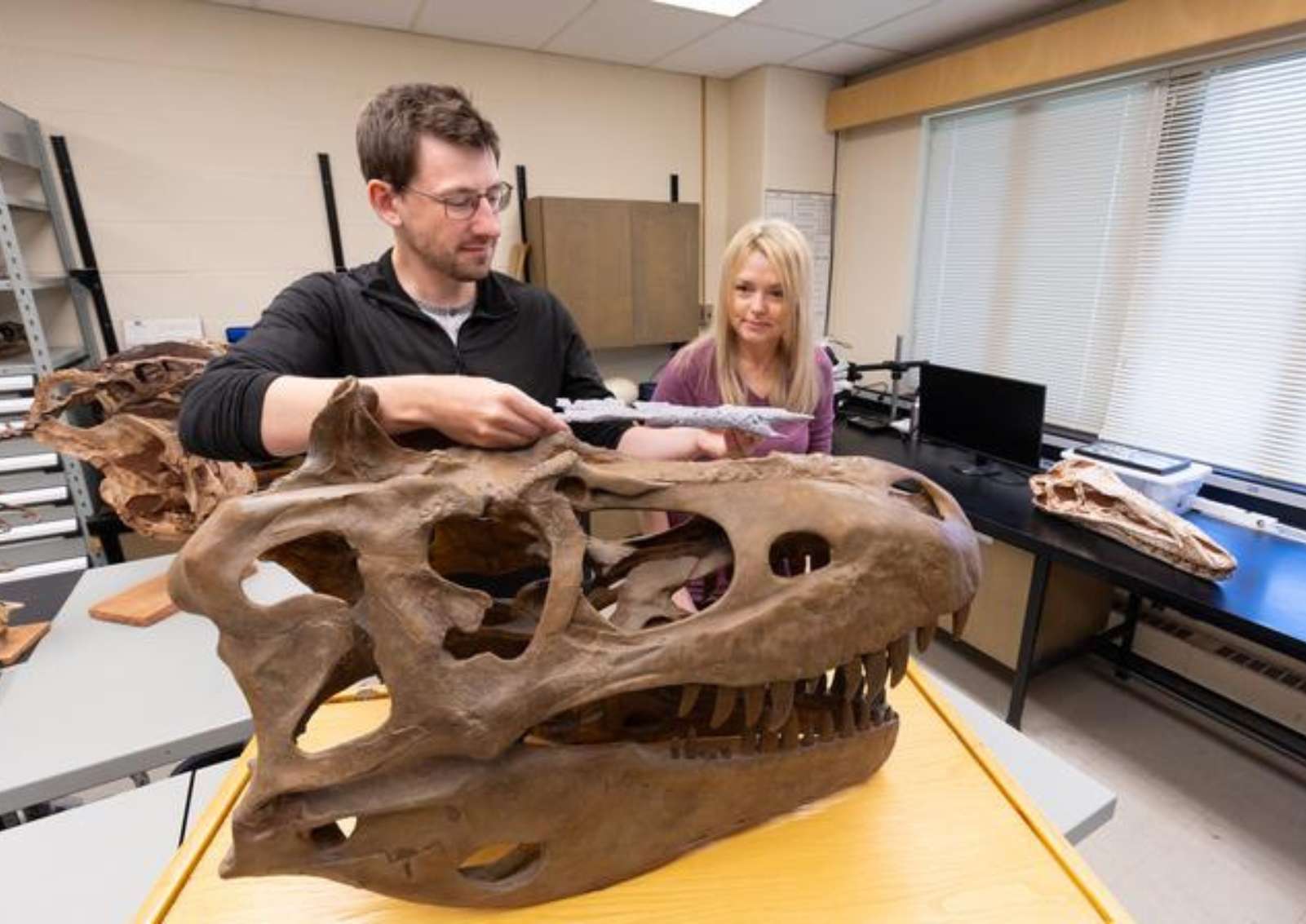

Scientists have identified a new dinosaur species from fossils stored in a Mongolian museum, and they say the find offers a clearer view of how tyrannosaurs rose to power. The species, named Khankhuuluu mongoliensis, or “Dragon Prince of Mongolia,” is believed to be one of the closest-known ancestors of the tyrannosaur family.
The discovery, published in the journal Nature, marks a turning point in the study of these iconic predators. Researchers say the fossil reveals a stage in evolution previously missing from the timeline – a crucial link between small early hunters and the giants like Tyrannosaurus rex that appeared later.
“This discovery shows us that, before tyrannosaurs became the kings, they were princes,” said Professor Darla Zelenitsky, a paleontologist at the University of Calgary.
The fossil bones were originally found in Mongolia during the early 1970s. For decades, they were thought to belong to a known species, Alectrosaurus. But when PhD student Jared Voris examined them more closely, he noticed unique features that didn’t match the original classification.
Paleontologists have identified a #new dinosaur species, Khankhuuluu mongoliensis, related to Tyrannosaurus rex, from 1970s Mongolian fossils. Initially misclassified, reanalysis revealed unique skull and toe features. Smaller and agile, it’s considered a “missing link” in… pic.twitter.com/ZX0uuj5mFB
— Info Room (@InfoR00M) June 12, 2025
“I remember getting a text from him – that he thought this was a new species,” Zelenitsky said.
After further study, Voris and the team confirmed that the bones represented an entirely new species. The find fills a missing gap in the evolutionary tree and helps explain how tyrannosaurs developed some of their most famous traits.
Khankhuuluu likely weighed around 750 kilograms (about 0.75 tons), far smaller than a fully grown T. rex, which could weigh over 6,000 kilograms (six tons). But the fossil shows early versions of features that later defined the tyrannosaur family.
Zelenitsky explained that this is a transitional fossil between earlier ancestors and the mighty tyrannosaurs.
Researchers noted the dinosaur’s skull had a strong nasal bone – an early step toward the powerful bite force seen in its larger relatives. “We see features in its nasal bone that eventually gave tyrannosaurs those very powerful bite forces,” Voris said.
The discovery also supports theories that tyrannosaurs moved between Asia and North America using land bridges that once connected Siberia and Alaska. That movement gave them access to new habitats and helped drive the evolution of different branches in the tyrannosaur family.
“That movement back and forth between the continents basically pushed the evolution of different tyrannosaur groups,” Voris said.
With its blend of early and advanced traits, the newly identified Khankhuuluu mongoliensis—nicknamed the “dragon prince”—is helping scientists rewrite the history of the tyrannosaur family and uncover how one of Earth’s most powerful predators came to be.
